Plan to Install Green Energy Storage on Williamsburg Roof Raises Tenants’ Ire
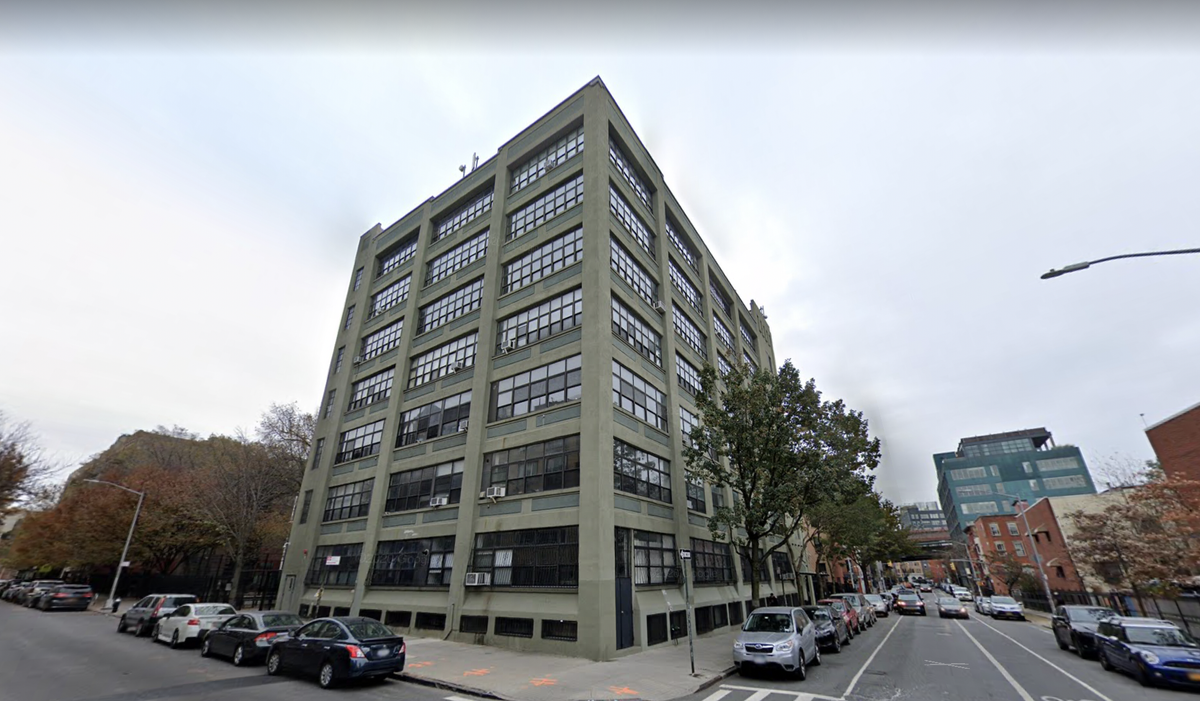

A proposal to install energy infrastructure on a Williamsburg roof to ease the load on north Brooklyn’s power grid faces angry opposition from tenants who say they’re being left in the dark.
The company MicroGrid Networks (MGN) is looking to install a series of energy-storage batteries and solar panels at 315 Berry Street in Williamsburg, as part of a larger effort by Con Edison to reduce the strain on its Water Street Substation, which serves the area.
Con Ed says demand is already pushing up against the substation’s existing capacity of 373 megawatts. Currently, the agency relies on disruptive wire upgrades and polluting “peaker plants”—including one located on Williamsburg’s Kent Street—to avoid brownouts and blackouts, particularly in the evenings when demand is higher.
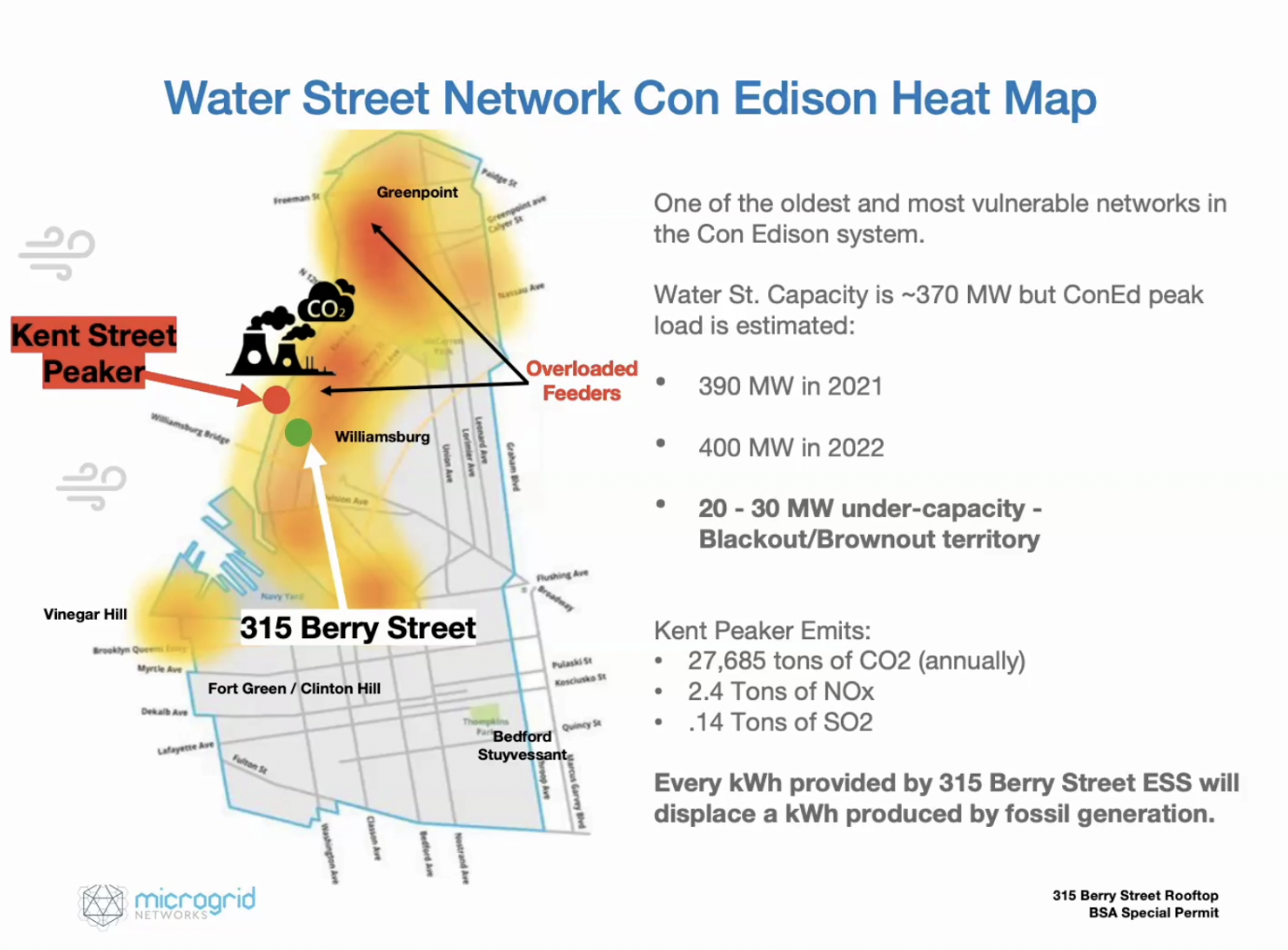
Batteries like the ones used by MGN are designed to collect energy during low-demand periods, then re-deploy it to the surrounding area when demand shoots up, thereby reducing stress on the system at peak hours without emitting polluting particulates.
Such batteries have already been installed on properties elsewhere in the borough, including at the Marcus Garvey Apartments in Brownsville. And as part of his series of “Green New Deal” initiatives, Governor Andrew Cuomo is pushing the utility companies to install 1,500 megawatts of such storage in New York State by 2025.
“Energy storage projects such as this one can help us maintain the reliable service our customers deserve, particularly when the demand for power is high,” a spokesperson for Con Ed told Bklyner in a statement. “This energy storage system will help this customer’s participation starting in 2022 in our Dynamic Load Management program, which incentives customers to reduce their need for grid power at peak times.”
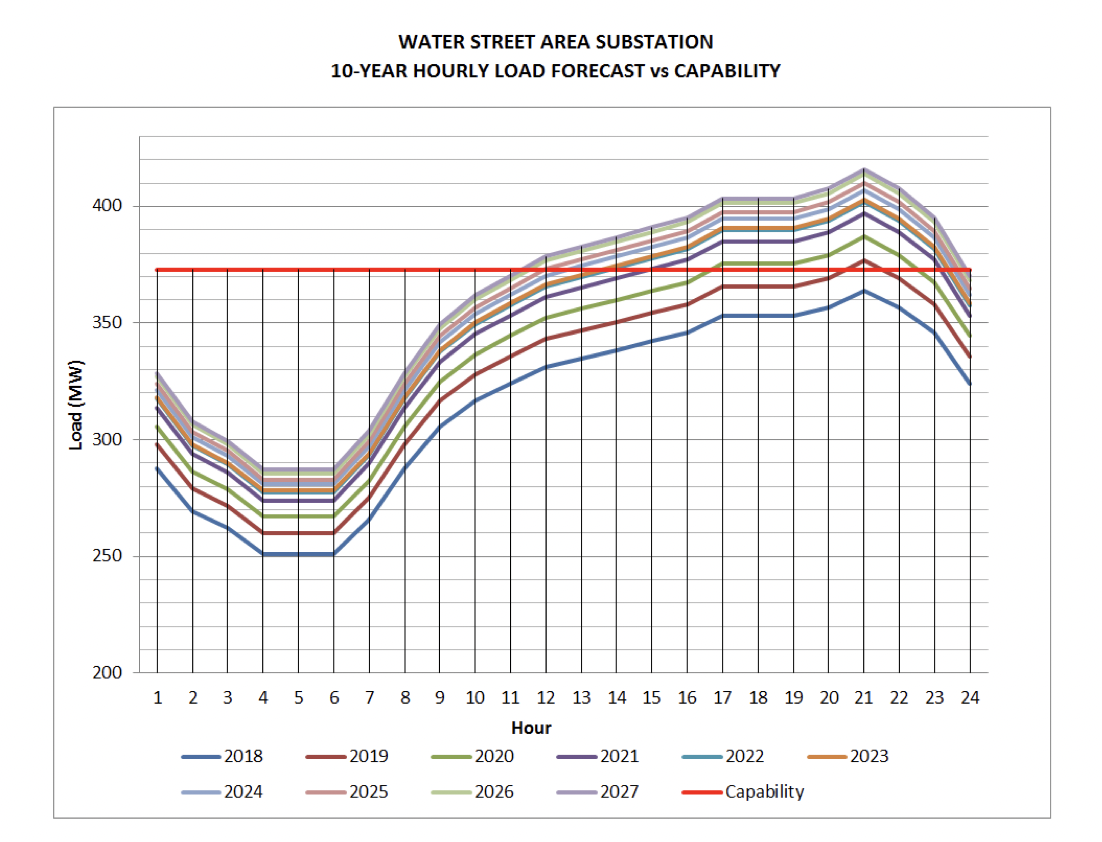
But finding appropriate places to install the batteries along with solar panels has been a challenge, MGN says.
Of the 200 north Brooklyn properties the company says it reviewed in search of sites near high-demand residential areas that met their structural requirements, they found only two that met their needs: the parking lot of a Key Food building at 243 Calyer Street, where MGN’s equipment can be installed as-of-right, and the roof of the seven-story residential building at 315 Berry Street, which requires a variance from the city’s Board of Standards and Appeals.
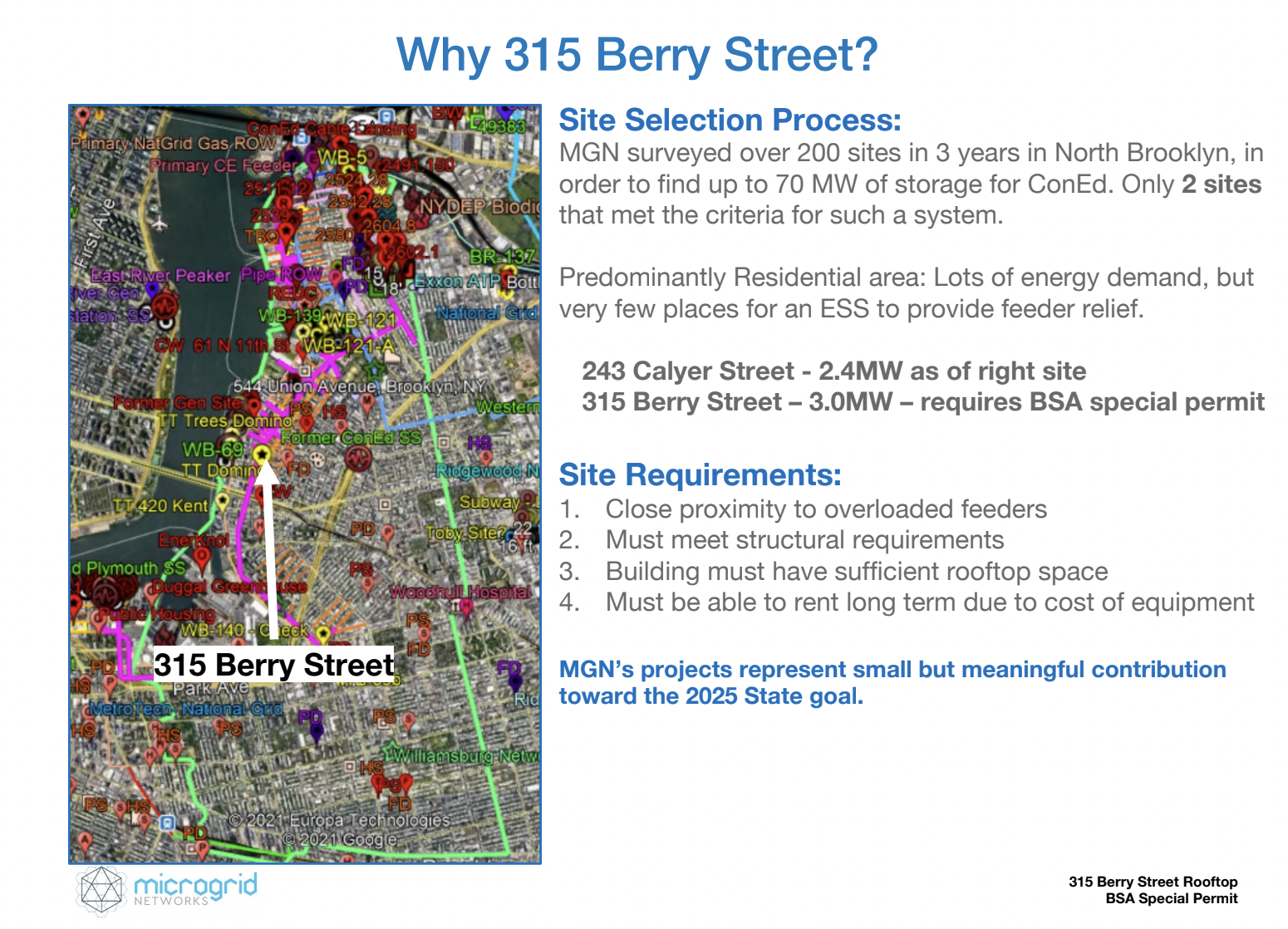
MGN wants to install over a dozen batteries, along with a smattering of solar panels and other equipment, on the roof of 315 Berry, which originally served as a munitions factory and is built with reinforced concrete. MGN also says it will replace and insulate the aging roof during the installation process.
The company estimates the installation would be able to store up to three megawatts of energy, which it calls a “small but meaningful contribution” to the state’s 2025 goal.
But some residents at the 49-unit apartment building oppose the project, saying they’ve been kept out of the loop about a four-month installation process they fear would significantly disrupt their lives. And they accuse the landlord, Richard Herbst, of failing to adequately maintain the 92-year-old building.
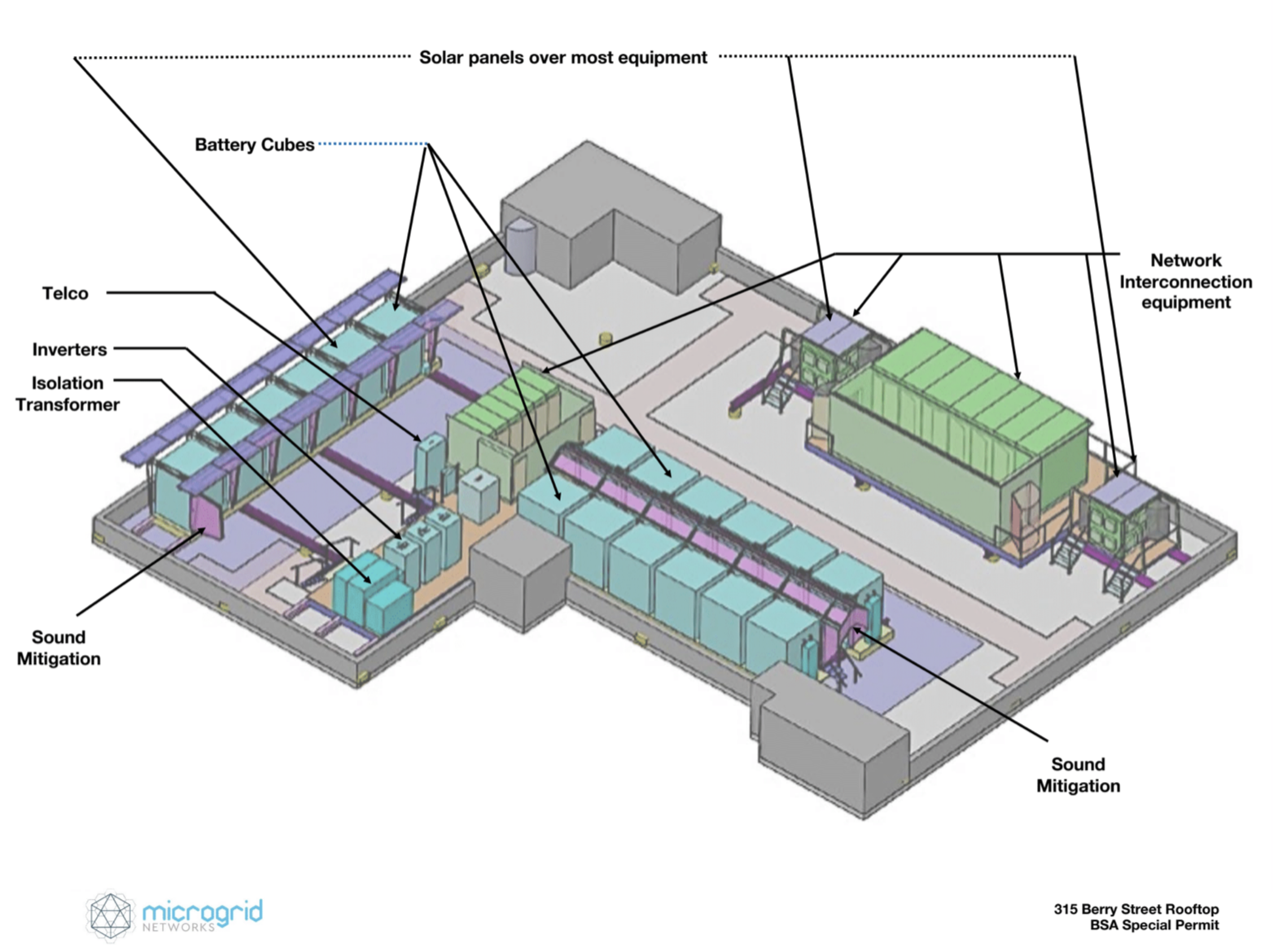
The building “is in really bad condition,” tenant Olivia Silver said at a meeting of Brooklyn Community Board 1 last night, after MGN gave a presentation on the proposal.
The city’s Department of Buildings issued a partial vacate order for 315 Berry earlier this month, after a chuck of the facade fell into the building’s interior garden.
“In our apartment alone, there are cracks in the walls and in the ceiling, pieces of concrete that fall off the walls and the ceiling every now and then,” Silver said. “And every time it rains, the water seeps in through the walls.”
Silver also said that, despite MGN’s claims to the contrary, many of her neighbors in the building hadn’t been properly notified of the project.
“The proposed work is going to cause tremendous disruption to the building which is going to be harmful to all the tenants,” she said.
Herbst, the landlord, insisted that the issues with the facade were long-standing and not connected to the roof installation. He also told Bklyner he had sought to improve his relationship with the building’s tenants in recent years, and was disappointed that the battery proposal had “brought it to surface” previous tensions that he thought had been resolved.
“I thought it was a good idea,” he said. “Had I known the reaction of the tenants, maybe I would have approached this differently.”
Herbst, who said the project would bring in “nominal rent, nothing crazy,” said he planned to “take a back seat and see if the tenants and Microgrid can resolve the issue.”
The Community Board’s land use committee, which casts an advisory vote on BSA variances, voted against recommending the project, and suggested MGN seek to install its batteries areas zoned for industrial use, where they can be placed as-of-right. But MGN says it believes it can find a way to address the concerns of the tenants at 315 Berry Street.
“We think that the more we get to explain how these facilities help decarbonize and modernize the electrical grid, the more people will be excited to support these efforts,” Monty Bannerman, MGN’s CEO, told Bklyner in a statement.
“The facility at 315 Berry will benefit directly the western portion of CB1 and portions of CB2 & CB3 reducing the risks of brownouts and blackouts and the need for peaker plants use during the heat season. MGN is committed to working with the tenants of 315 Berry to make the 4-month installation as painless as possible.”
The BSA will review the proposal at its meeting on April 13th.





